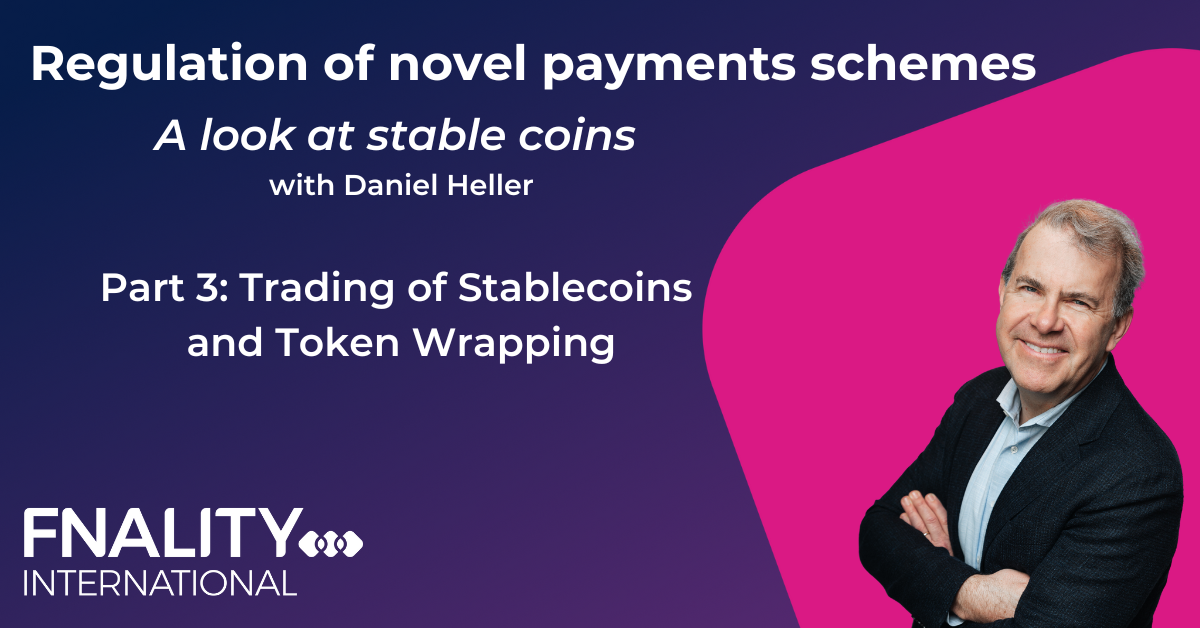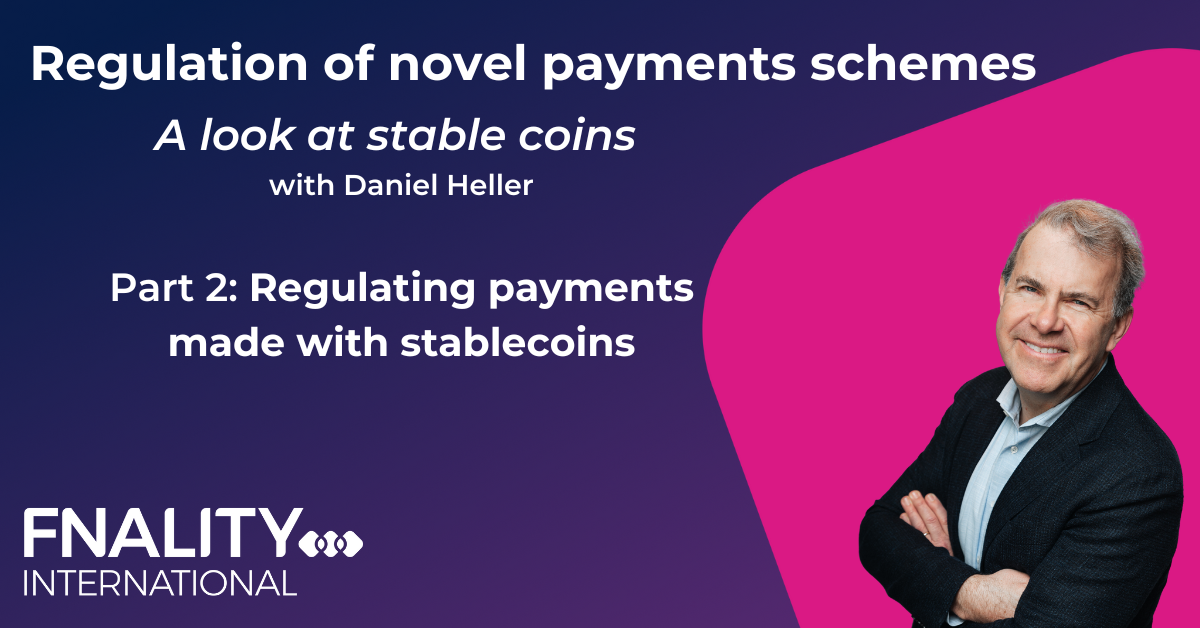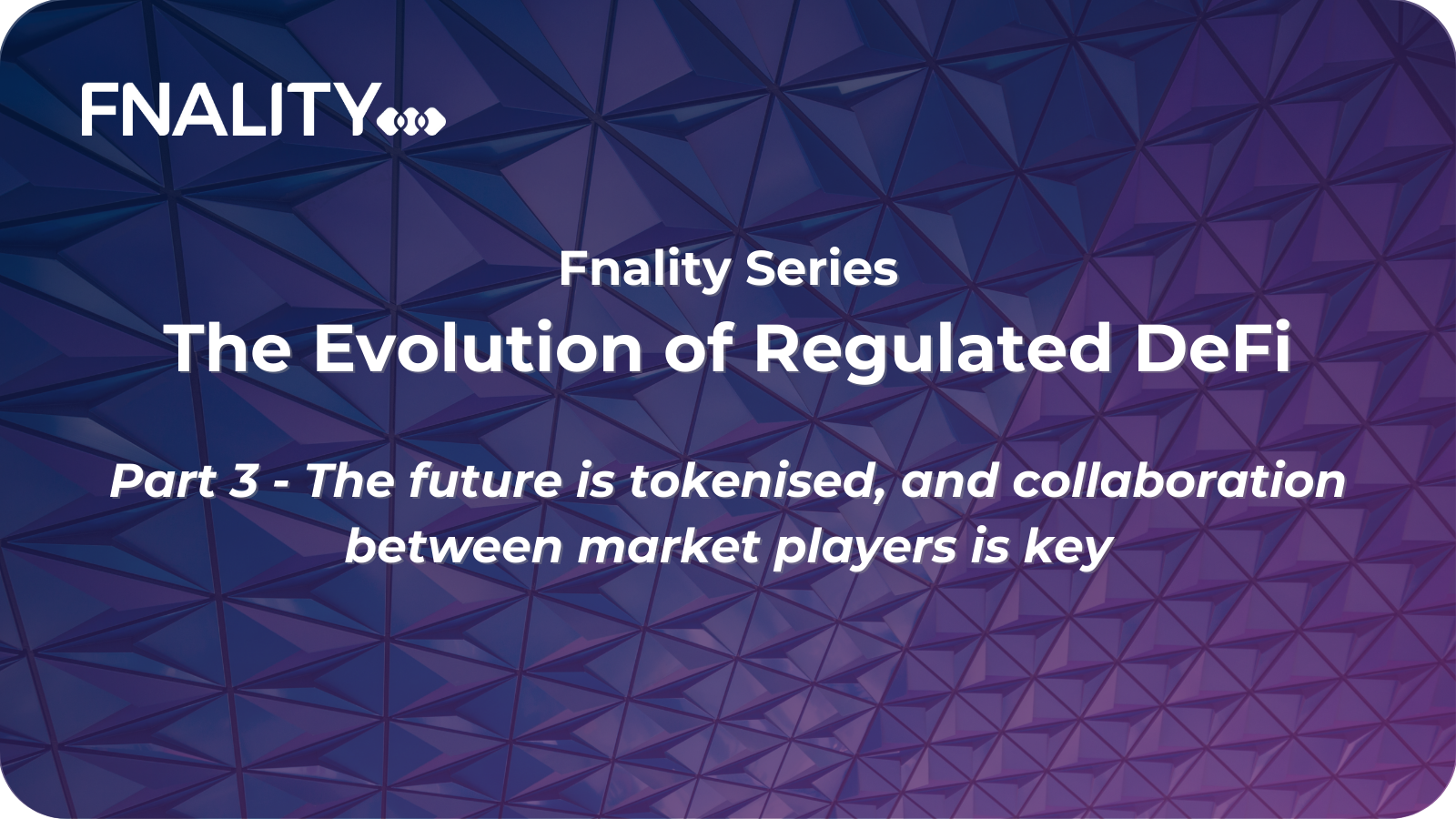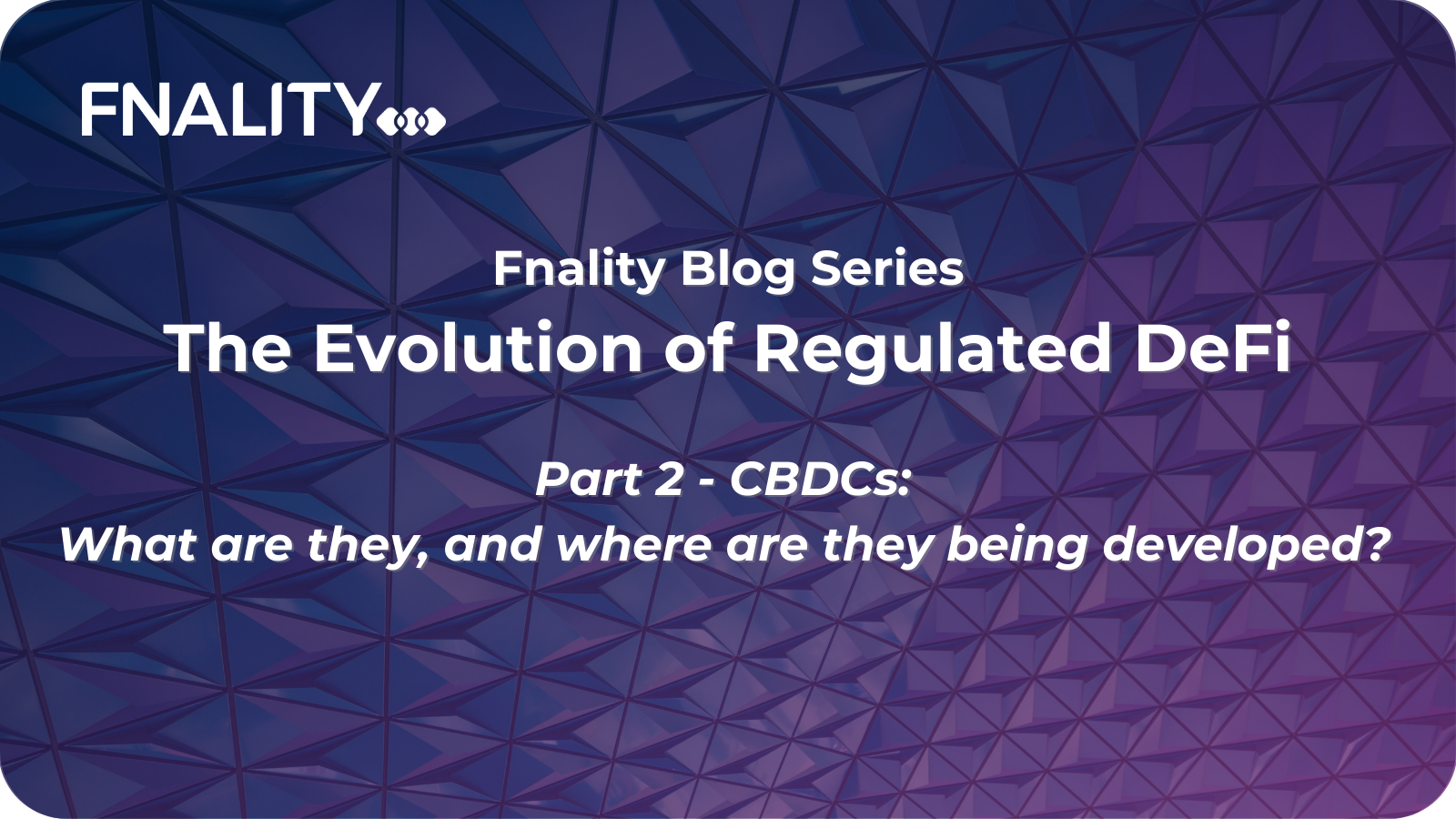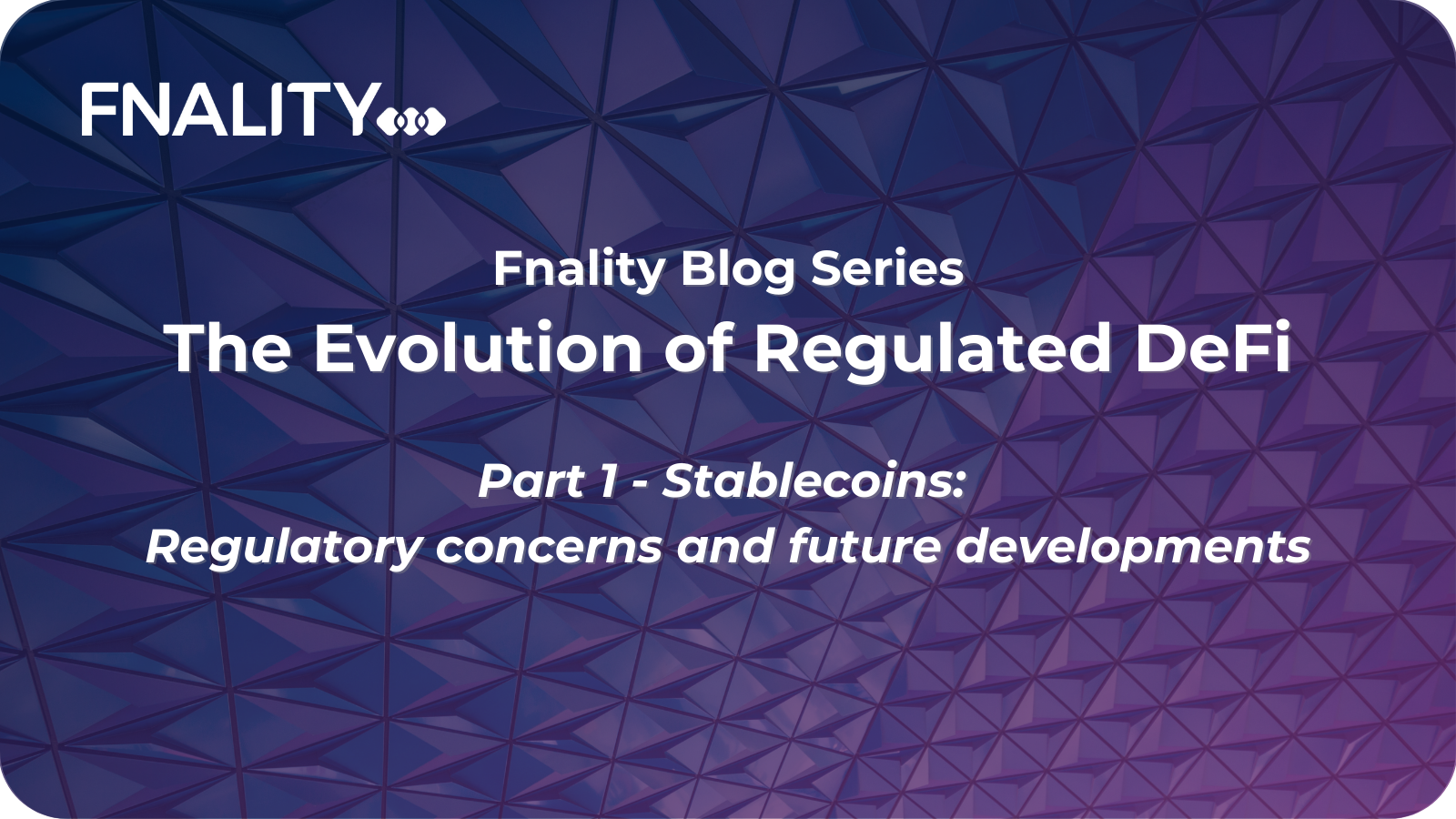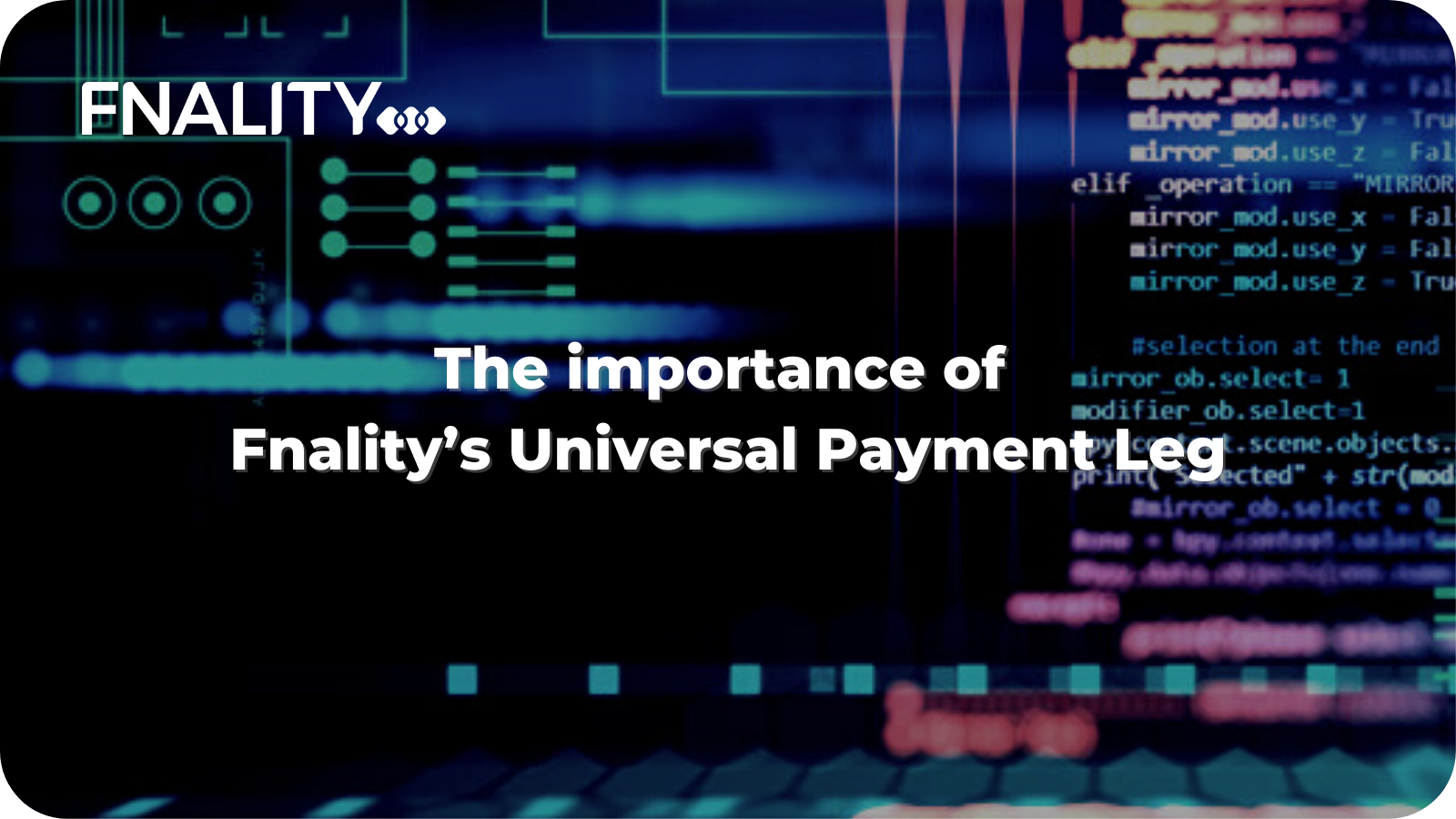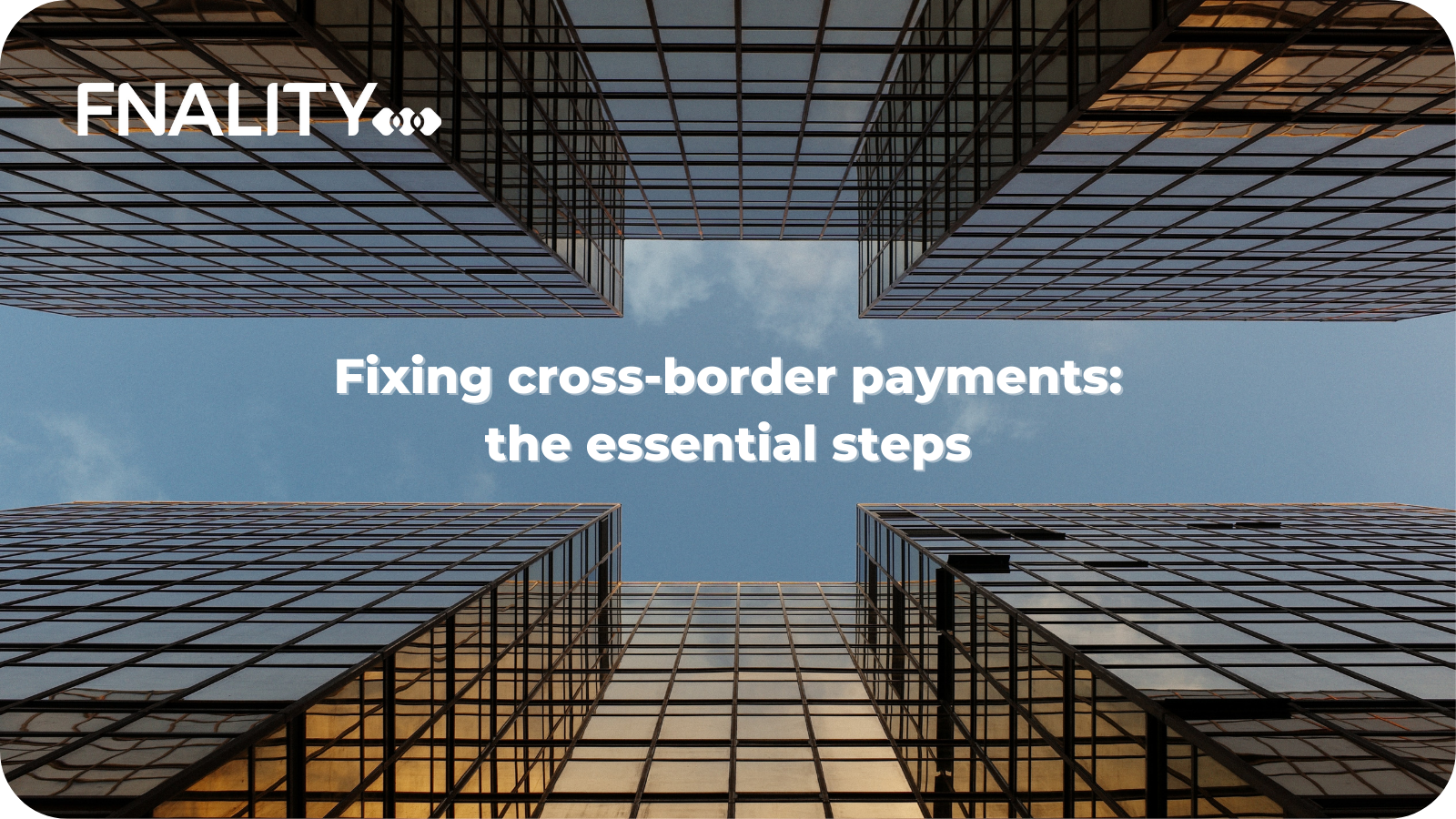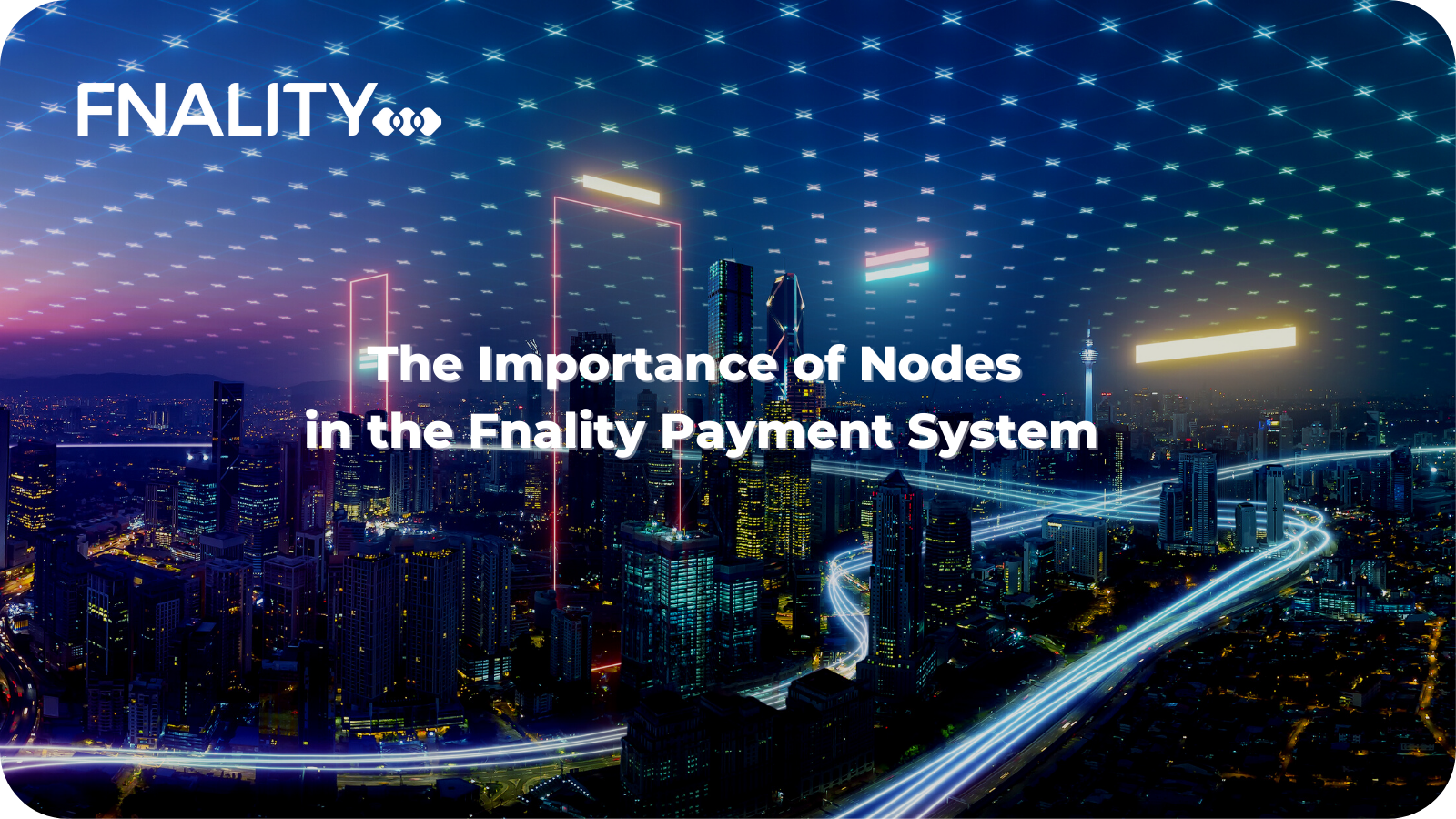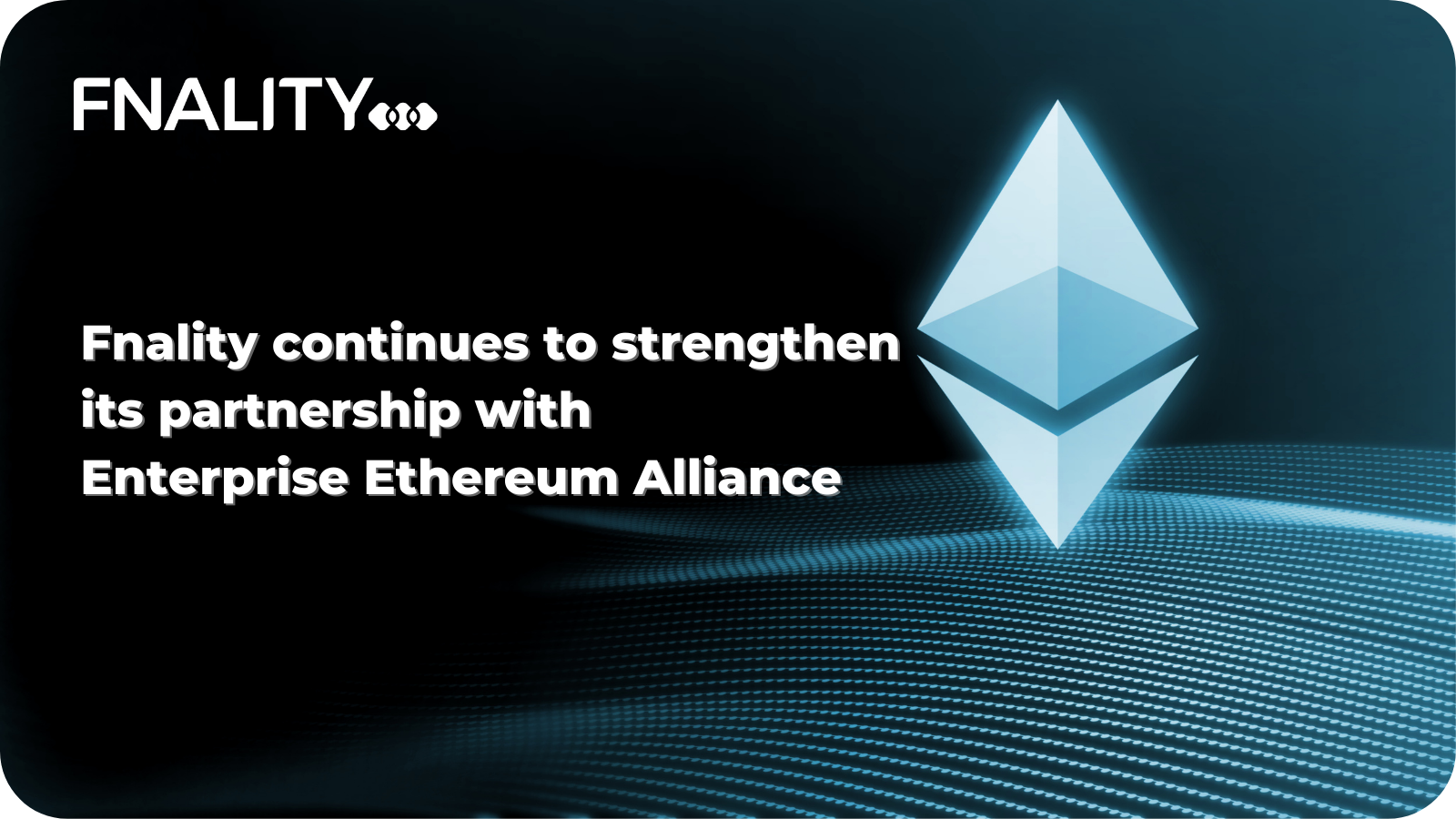In the previous parts of this series, we’ve been looking at the regulation needed in order to encourage the adoption of stablecoins for retail payments (read Part 1 and Part 2 here).
Notwithstanding the similarities between bank deposits and stablecoins, there are some notable differences. For instance, a stablecoin issuer can allow the stablecoin to be listed on (crypto) exchanges and trading venues. In contrast to stablecoins, bank deposits are not tradable, i.e. there is no secondary market for bank deposits. In practice, issuers of the stablecoins are also operating the exchanges where their stablecoins are traded alongside other cryptoassets. But stablecoins can also be listed on...

